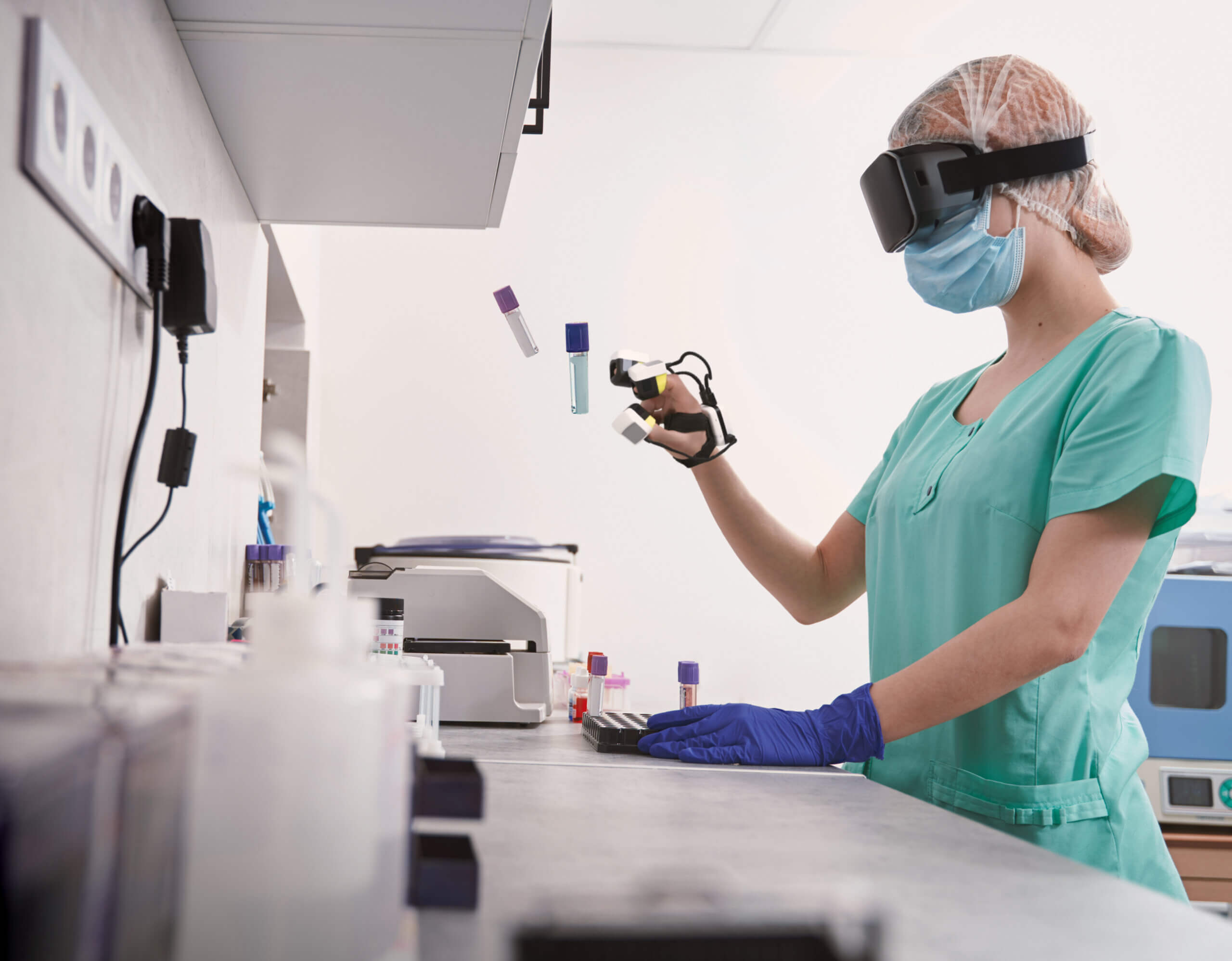
Medical Equipment training
For medical equipment training, VR and MR provide medical students and physicians with the opportunity to engage in realistic, interactive simulations of medical procedures and equipment operations. The addition of haptic gloves, such as TouchDIVER, takes medical equipment training to the next level by incorporating the sense of touch into virtual and mixed-reality environments.

Immersive medical training in VR and MR
VR allows trainees to visualize complex machinery and interact with virtual interfaces, gaining practical experience without the risk of real-life consequences. MR combines the benefits of VR with the real-world environment, overlaying virtual elements onto physical objects. This integration enables trainees to learn in context, making the training more relevant and meaningful. By immersing trainees in lifelike scenarios, VR and MR foster improved spatial awareness, critical thinking, and decision-making skills, which are essential for medical professionals.
Elevating medical equipment with TouchDIVER
TouchDIVER provides textures rendering, force feedback, and even thermal cues, allowing trainees to feel the physical properties of objects within the simulated environment. With TouchDIVER, trainees can sense the texture of different medical instruments, enabling them to differentiate between various surfaces and materials. Force feedback technology ensures that trainees experience the appropriate resistance and response when manipulating virtual equipment, mirroring real-world sensations. Moreover, the incorporation of thermal cues enhances realism and adds another layer of sensory information to the training experience.
A tactile dimension for VR medical procedures
LIFELIKE INTERACTIONS By naturally using their hands, trainees feel virtual procedures for real. TouchDIVER wearable device allows trainees to sense virtual tissues, instruments’ pressure, resistance, and the feeling that the body’s anatomy creates on surgical instruments.
REDUCE LEARNING CURVES This enhanced realism improves trainees’ productivity by facilitating better hand-eye coordination, dexterity, and precision. They can practice delicate operations and master surgical techniques, reducing the learning curve in the operating room.

